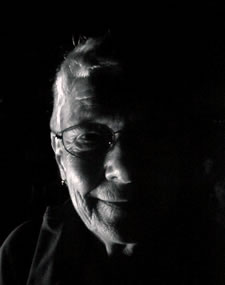 |
Dharma Gleaningsbycynthia rich
|

|
November 20, 2016—December 28, 2016
November 20, 2016
Practice is the art of being in two places at once, until over time we learn how to abandon the place of reactivity and can pass most of our time dwelling in awareness.
December 7, 2016
I have understood the arts—literature, music, theater, film, painting, dance—to be dharma doors (February 22, 2015), that have the power to open us in important ways to the possibility of compassion, forgiveness, sympathetic joy, ability to tolerate suffering, harmony, understanding of others, spaciousness, the beauty of non-thought. A problem arises when lovers of the arts rest there, without stepping over the threshold to the deeper and liberating insights that the dharma offers us.
It now occurs to me that to be addicted to the arts is to inhabit what Buddhism calls the heavenly realm, which would seem to be ultimately desirable and yet can restrict us to the realm of the sensual and emotional. The word “realm” as the Buddha uses it, whether it is the realm of beasts, hungry ghosts, hell, humans or heavenly beings, implies limitation, just as the Buddha’s beautiful realm as a prince offered him only a limited view of the world. He had to leave that realm and wander to sit under the bodhi tree until he could walk all the way through the dharma door to a more profound access to reality.
December 12, 2016
For beginning practitioners the idea of “non-self” can become a rather fixed concept and goal that is supposed to replace the fixed concept of self. It then becomes the opposite of its meaning—which is the continuous fluidity and instability of our identities—and feels less readily attainable.
Instead of focusing on a seemingly distant and unimaginable goal of someday experiencing ourselves (and other beings and objects) as “non-self,” we can more helpfully direct our attention to the actual process that over time allows us to end our delusions of fixed and separate identities.
A useful word to keep our eye on that process is de-solidifying. We can simply begin to observe any moments when we glimpse a temporary hardening or loosening of ego, to see how those moments feel, and to ask ourselves how we might hasten the melting of the fixed concept of the creature we have created.
For example, if we find ourselves in an argument that calls up a “self”-righteous opinion, we can notice what it feels like as our “self” becomes at once inflated and tightly constricted—my thoughts, my feelings, I am right, I am misunderstood. Later when we come home, after we have stopped replaying that scene, and are enjoying a hot chocolate, we can notice with interest how that “self” is now much less solid, and may even feel rather spacious and boundary-free. We can appreciate and encourage that de-solidifying, notice how we feel lighter, more immaterial, maybe sweeter like the hot chocolate after the forced expansion and hardening of our earlier selfing, and remind ourselves that in cultivating such attention to the becoming and dissolving of ego we are stepping onto the path.
December 28, 2016
It takes a large heart to truly love oneself. Once it has cracked open, all kinds of sentient beings will start crowding in.